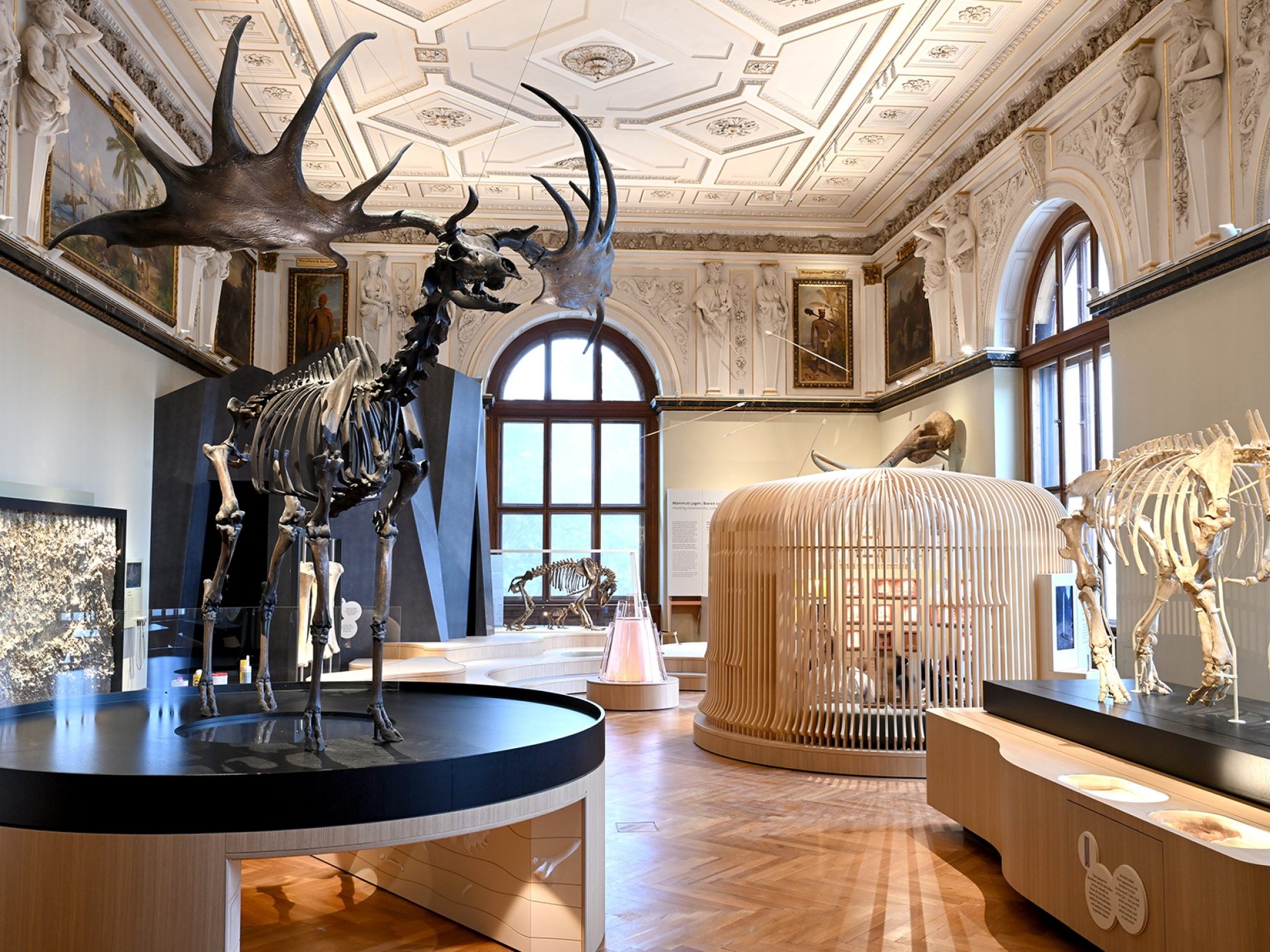Children in the Ice Age: New Permanent Exhibition at the Natural History Museum Vienna

About 11,700 years ago, the last great Ice Age ended, whose climate drastically made life difficult for Homo sapiens. The role of children is often overlooked, explained project manager Caroline Posch from the Prehistoric Department at the NHM during the presentation of the exhibition. Contrary to common depictions, it can be assumed that in an Ice Age group of 20 people "at least ten were under twelve years old" and they were an important "part of society." "Children had to work," such as gathering food, confirmed Mathias Harzhauser, director of the Geological-Paleontological Department.
Objects from the Entire NHM Collection Gathered for New Permanent Exhibition
A shift in perspective among some researchers towards Ice Age children is merely "a development of the last 15 to 20 years," said Posch. Traces of children are often smaller and harder to identify. Among the exhibits is a 30,000-year-old, approximately two-centimeter small clay mammoth, whose creation was long attributed to adults. However, parts were made by children, according to Posch. Residues such as fingerprints and nail marks indicate this.
The new exhibition was created through the collaboration of the museum departments of Prehistory, Geology, Science Communication, and Exhibition Management, with objects from the entire NHM collection finding their way into the Ice Age show. For the first time in twenty years, the approximately 700,000-year-old Hundsheim rhinoceros from Lower Austria is on display here, according to Harzhauser. In addition to other skeletons of animals like saber-toothed cats, there are artifacts such as jewelry, toys, or objects for personal care.
"Children of the Ice Age": Interactivity as Key
A central aspect of the show is also interactivity. Feedback from three school groups was incorporated into the design. For example, it is possible to touch a part of an armadillo shell or crawl under the skeleton of a giant deer. At digital stations, guests can simulate making fire or dress Ice Age people. The target audience of the concept is six to ten-year-olds. Precise classifications of space and time were therefore less important than "letting the objects speak," said Agnes Mair from the Science Communication Department of the NHM. Ten audio stations are also intended to contextualize the everyday life of Ice Age children.
Previously, Hall 16 was renovated for two years. According to NHM Director General Katrin Vohland, the financing was made possible by the legacy of Oskar Ermann, who passed away in 2011, to the museum.
(APA/Red.)
This article has been automatically translated, read the original article here.





